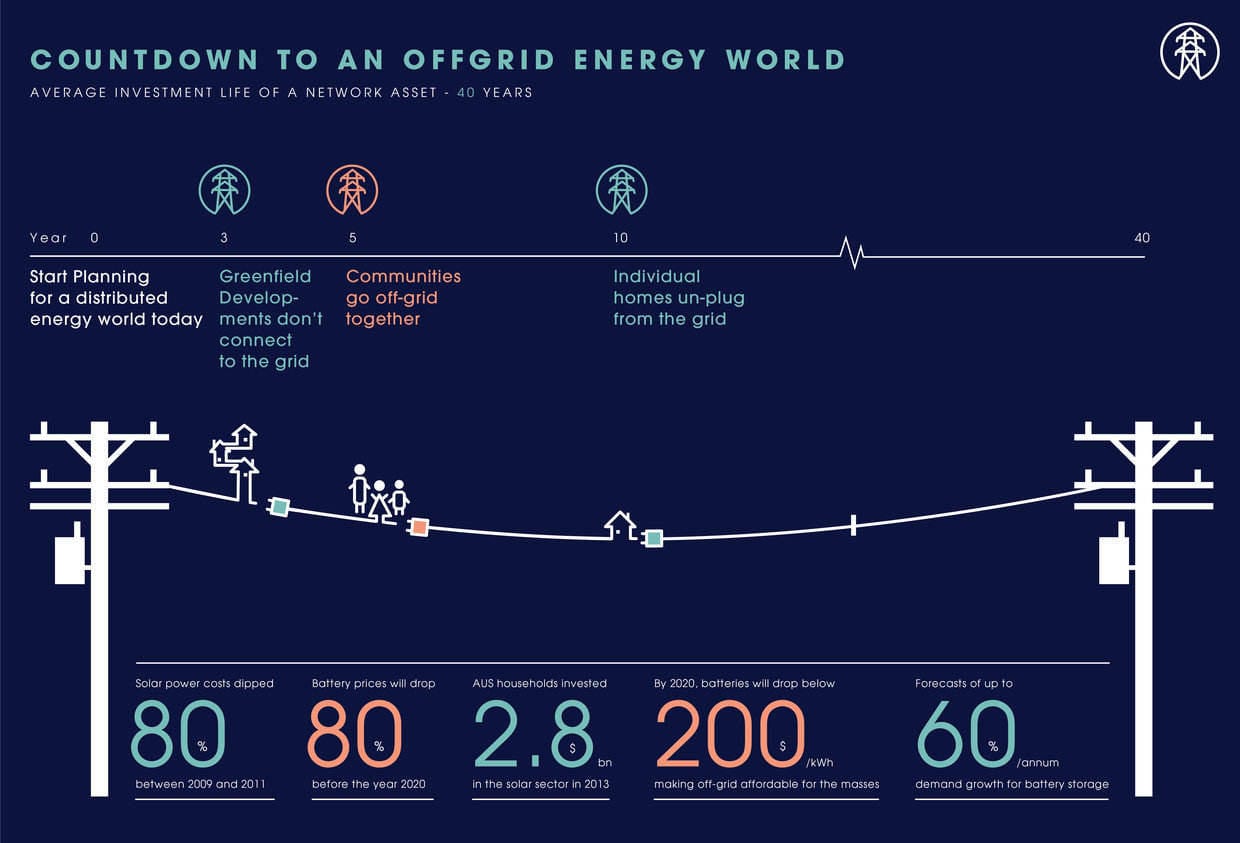Please see our stories, This northern NSW town could be the first to quit the grid, and Western Power to take small communities off grid with solar plus storage.
When everyone you talk to about solar power, talks about battery storage too, you know the energy market is on the cusp of a big change. We often speculate what the future will look like, but what should the future look like? What should our energy market look like in ten years time, and how do we get there?
Three of our recent and current projects explore just that, with the community of Tyalgum in NSW looking to go off the grid as a community, the town of Newstead in Central Victoria looking to transition to 100% renewable energy, and a niche development of 80 homes and a commercial precinct in Bendigo, looking to be off the grid from day one. The common thread is that an efficient transition of our grid will require, you guessed it, new business models and engaged network companies.
There is understandably, a lot of excitement about battery storage. We have been known to get excited too (about Powerwall that is). But there is an artificial, unofficial debate raging about whether people will leave the grid with battery storage, or simply use solar and storage in hybrid mode, while retaining a connection to the grid. In some ways, it doesn’t really matter. There will no doubt be the committed 10% that leave the grid regardless of the cost, and no doubt there will be many others that simply want the comfort of battery back-up, or simply people that fall for the sales pitch.
What matters most is how the network companies respond.
If network companies respond to hybrid storage by shifting tariff structures (shifting the economic goal posts), they are really going to push customers to the edge. When assessing the viability of Tyalgum leaving the grid, we explored a number of scenarios. We found that network revenue could shrink from approximately $400,000 per annum to under $100,000, if the town transitioned to 100% renewables using solar power and storage behind the meter (i.e. hybrid solar and storage).
It would be understandable for a network company to want to claw some, or most of that back. If they tried to claw all of that back, the financial savings to the community of Tyalgum would drop from $580,000 to $265,000. Eeek! That would double the payback time and get the community seriously offside.
There was a sweet spot.
If the network company servicing Tyalgum dropped their revenue to around $250,000, Tyalgum could transition to 100% renewables, with plenty of storage to enhance reliability (about 80% self-sufficiency) and achieve a payback of less than ten years on their investment today. By 2020, it gets below seven years.
But this is not just an economic transition one, it is social too. One of the key themes emerging from workshops and dialogue in Tyalgum, was the need for a more transparent relationship between customer and energy provider, and an integrated energy service solution that helped address inequality across customers. Customers increasingly expect businesses to become meaningful, honest contributors, to community life. The days of set and forget energy supply are over.
As our projects with Renewable Newstead and in Bendigo develop, we will be working with local network companies to explore these tensions between our energy market history and future, and search for a constructive middle ground. Because if we don’t, we risk a chaotic, inefficient and expensive energy market transition.
Tosh Szatow is direct of Energy for the People.
Please see our stories, This northern NSW town could be the first to quit the grid, and Western Power to take small communities off grid with solar plus storage.









